Applying chemicals to the garden and yard can be a tricky thing. Too much and you’ve overdosed the landscape, but too little and you’ve done nothing but waste your money by pouring it down the drain.
There are plenty of issues concerning the use of these synthetic compounds in world that’s saturated with industrial chemicals.
For the gardener wary of contributing to these problems, applying pesticides and fertilizers can be a scary thing.

We link to vendors to help you find relevant products. If you buy from one of our links, we may earn a commission.
On the flipside, there are folks who are ready and eager to toss on a backpack sprayer and spray away dandelions, gout weed, and every last creepy-crawler in a hundred-yard radius. Pesticides and other chemical applications are a viable solution, damn it. Don’t tell me what I can and can’t spray!
I think there’s room for both people out there in the world.
After all, two different sides make up a single coin. If we can meet in the middle by practicing safe spraying and chemical applications, we’re off to a good start.
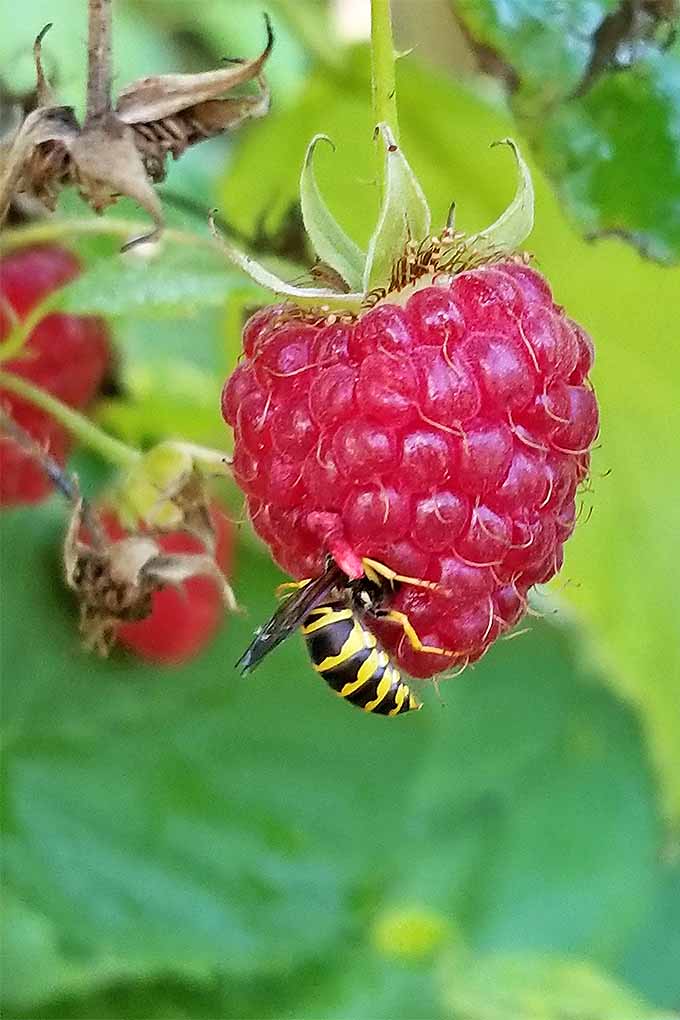
We’ve got an entire article for you on what spraying does and how we do it, and the best alternative methods to chemical application.
What Do Pesticides Do?
The term “pesticide” is most often associated with something that kills cockroaches and other types of vermin, but “pesticide” is actually a catchall term for any chemical used to kill, limit, deter, and regulate populations or growth of animals, insects, or plants we consider to be pests.
People use sprays, dusts, granules, and other compounds to control a population of undesirable creatures.

It’s a shame that when a problem arises in the garden or the yard, the response given all-too-often is a reactionary one. “What chemical can I throw at this thing to kill it?” or “Give me a beer, some poison, and one hour, and I’ll take care of this thing” seem to be the first questions people ask when facing a dilemma. Well, maybe not the beer thing, but you get my point.
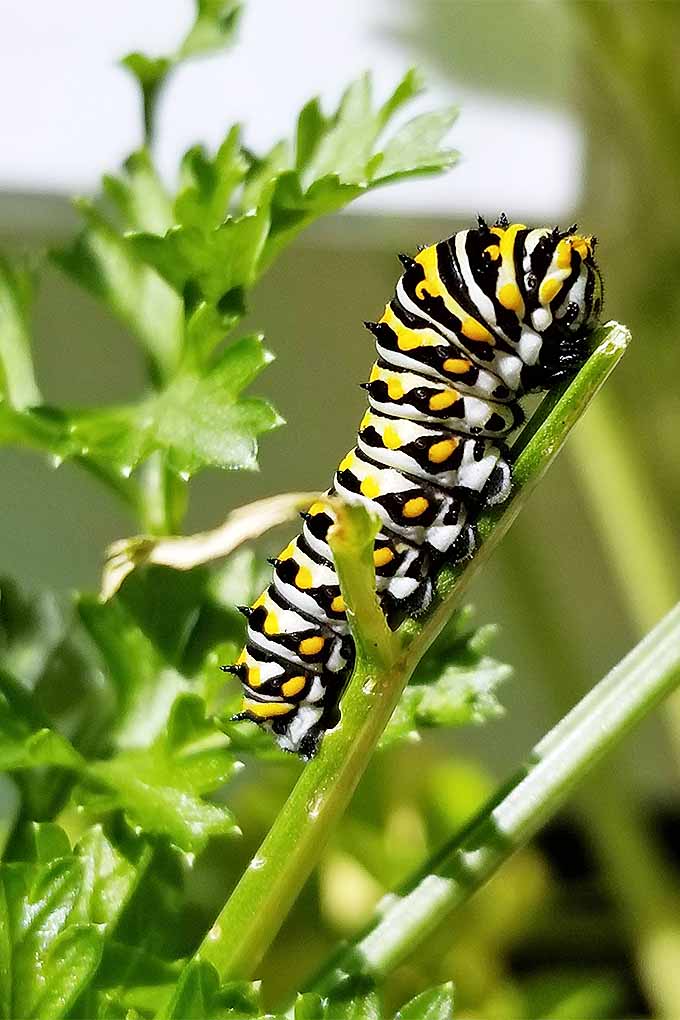
If there’s a key step in any pest control scenario, it is to develop the ability to pump your brakes and wait before jumping to conclusions.
Professional pest controllers are instructed on the importance of identifying a problem by first monitoring it, then identifying the pest or problem, and finally taking action to control it. This is the equivalent of a carpenter measuring his lumber twice and cutting it once.
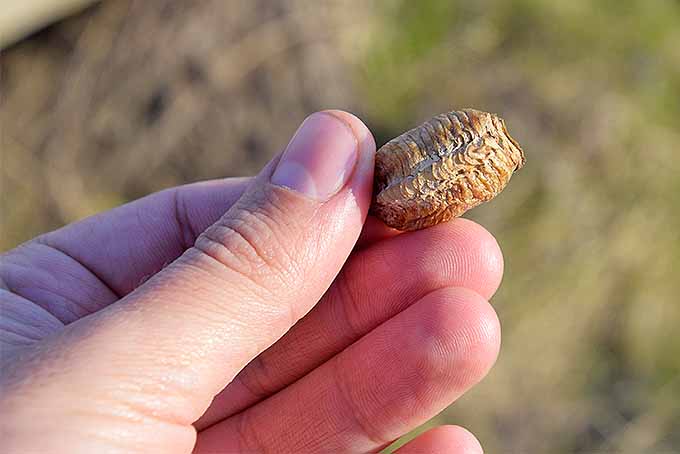
Instead of jumping into a problem with the intent of spraying it away, take a few moments to positively identify the situation.
When I attended my training courses to become a certified pesticide applicator, I was happy to learn that throwing chemicals at a problem is the last solution. Instead, we used a plan called Integrated Pest Management.
You Need a Plan!
Integrated Pest Management, or IPM, is a planned, strategic approach to fixing and preventing problems from occurring in the garden or the fields. It combines cultural, mechanical, and biological controls into one designated plan of attack. Pretty cool, right?
You can read more about IPM here.
I tend to be a bit of a “let’s see what happens” kind of guy, but I toss that out the window and approach any pest control issues with a calculated plan.
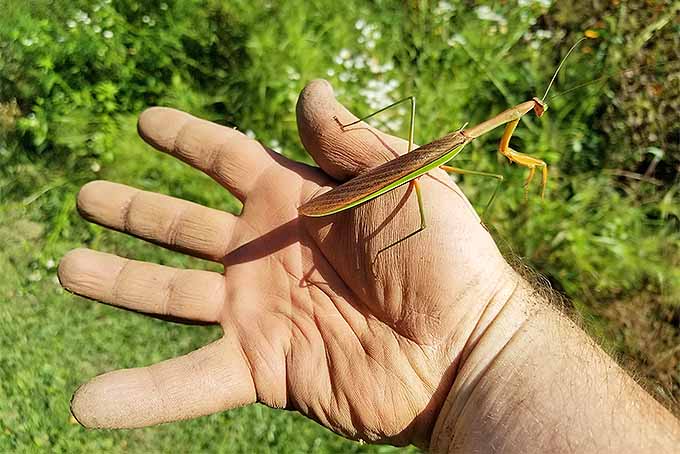
The Penn State Extension recommends adhering to the following courses of action: identify properly, learn pest life cycles, monitor and sample the environment for pests, establish an action threshold, choose the best combination of tactics, and finally, evaluate the results.
1. Get a Proper ID
Proper identification is required to make damn sure that you know what you’re looking at. It won’t help to apply Bacillus thuringiensis kurstaki to a fungal problem, will it? Properly identifying the problem is key!
2. Learn the Life Cycle
Learning the pest life cycle is necessary as well. And some problems are far easier to control at different life stages.
For example, sometimes when you identify the problem properly you can see that the end of the life cycle is mere days away, and you don’t need to do a thing about it except to wait for the inevitable.
3. Monitor and Sample the Environment
Monitoring and sampling the environment for the pest is important to understand the scale of what you’re dealing with.
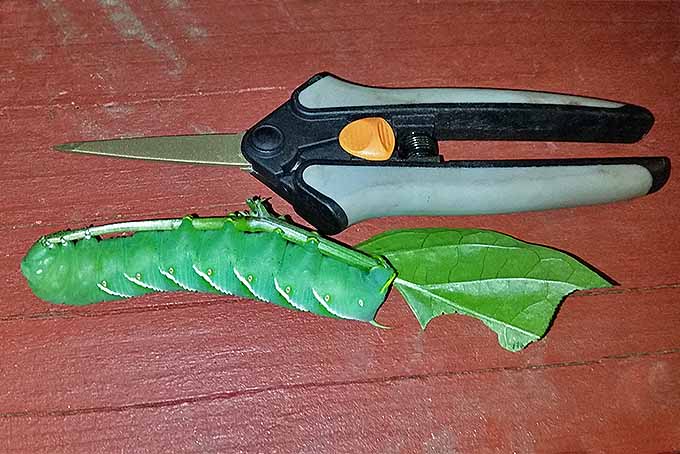
Last spring, I had a single hornworm on my jalapeño plants. I threw that unwelcome visitor on the street outside and spent a few days searching for signs of new troublemakers. I didn’t find another hornworm, so I determined that I didn’t need to do anything else to handle the problem.
4. Establish Your Action Threshold
Establishing an action threshold is just another way of saying, “How much am I willing to lose?”
Pests in the garden can be a pain in the neck, but if you’ve got a dozen tomato plants, is it worthwhile to treat every single plant because one has worms?
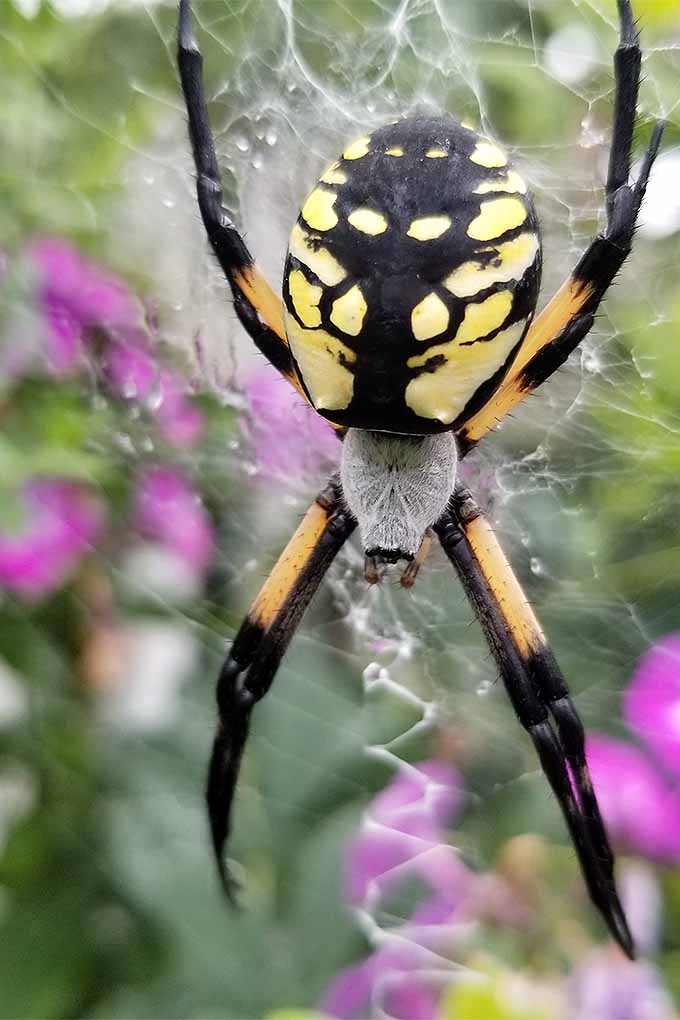
Powdery mildew can be a problem, but do you need to treat the single lilac in your yard? I know mine gets powdery mildew every year, and it’s just not worth my time, effort, and money to fix it.
5. Choose an Appropriate Combo of Tactics
Choosing the best combination of tactics is the key to developing your game plan.
To use my hornworm example, I found a single hornworm on a jalapeño plant. Once I had positively identified the problem, I searched the rest of my plants to find more troublemakers.
After learning that I had a single unwanted insect in the garden, and seeing that it was near the end of its lifecycle, I decided that my best course of action was to do nothing. If I had discovered a major infestation, I could have plucked individual worms off the plants or applied an organic spray to kill them.
6. Evaluate
Evaluating the results is the final phase, when you step back and examine how effective your total approach was. If your plan didn’t work in some way, go back through the steps and figure out where it went wrong, or where you misidentified an element of the problem.
The professionals are trained to use chemical applications as a last and final resort. As it turns out, the solution to most pest and garden problems is prevention, not annihilation.
Imagine this system as if it were a pyramid, with the most important element as the base.
The base of the pyramid is…
Cultural Control
We aren’t talking about trips to the opera here, people. Cultural control is the practice of reducing pest establishment, reproduction, dispersal, and survival by choosing the right plants, gardening practices, and environment.
Examples of cultural control include a good mowing schedule, smart irrigation and watering, and providing adequate airflow for the plants in your garden.
Proper watering practices can solve the majority of problems gardeners face. Setting up a good irrigation system is the ultimate solution to most problems, and this can easily be achieved by slapping in some soaker hoses below a good layer of mulch.

At the foundational level, try to avoid getting the foliage of your plants wet when watering.
I know from experience how difficult this is to do, and I hand water almost everything in my garden. If you’re like me and enjoy the practice, try to do it in the following way:
1. Maintain Diligent Watering Practices
Water in the mornings, so that excess moisture can evaporate during the warmer daylight hours. This is a great excuse to drink a cup of coffee in the company of your plants in the morning!
“Morning hours” can be anytime from 5:00 a.m. up to about 9:00 or 10:00 a.m. By watering early in the day, you give the plants their best chance to dry off any excess moisture, and to avoid getting burnt from drops of water clinging to foliage.
2. Plant Smartly!
When you read the tag of the plants you choose for your garden, have you ever noticed the seemingly large gaps of space recommended for planting? These numbers are recommended to maximize airflow for your plants.
It’s tempting to throw together your selections into tightly-meshed blobs of color, but it’s detrimental to their health in the long run.

When air stagnates, infection, pests, and rot are invited to the garden bed. Add a lot of moisture to that and you’ve created a recipe for trouble.
Did you know the lovely French marigold has been shown to repel stinkbugs? Planting smartly also includes adding companion plants to your garden that can repel undesirables.
3. Don’t Take Shortcuts
Good cultural practices involve planting species naturally resistant to diseases, pests, and infections, and avoiding those that are susceptible to trouble.
Although a short-term solution to a problem may have more immediate results, these courses of action will often lead to long-term headaches.
I work on a property that has several hundred American boxwoods planted far too tightly together. The homeowner wanted the landscape to look full and finished sooner than later.
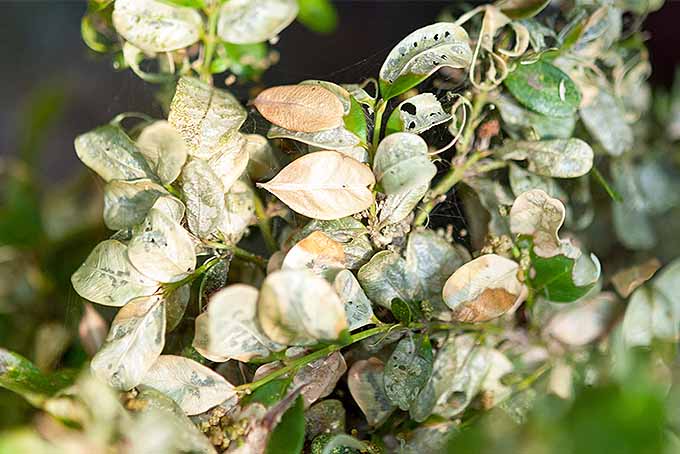
That worked well for a few years, but nowadays it’s a problem property. Those hundreds of boxwoods have grown into huge blobs that are suffocating each other. Worst of all is that in May, you can literally hear the boxwood leafminer activity in the shrubs, with clouds of adult flies hang over the plants.
Our only solution is to hard-prune the plants every few years, attempt to introduce parasitic insects (more on this later), and to apply chemicals as a final solution.
Shortcuts like this aren’t good for you, or for your garden. Maintain diligent watering practices, plant smartly, and don’t take shortcuts!
Mechanical Control
This is the second level of the pyramid. As the name implies, mechanical control is the use of anything that directly kills a pest or makes its environment unfriendly.
Springloaded and glue traps come immediately to mind, but mechanical pest control also includes the use of mulch, deer fencing, and any other physical device intended to prevent or deter pests from congregating.
For eradicating weeds and to prevent undesirable plants from taking root, the use of mulch plus old-fashioned hand weeding is the ultimate solution. I know from experience that it sucks to be bent over and hand-pulling weeds from in between lilyturf sprouts, but I’ll be damned if it isn’t the all-around best solution to taking care of undesirable plants.
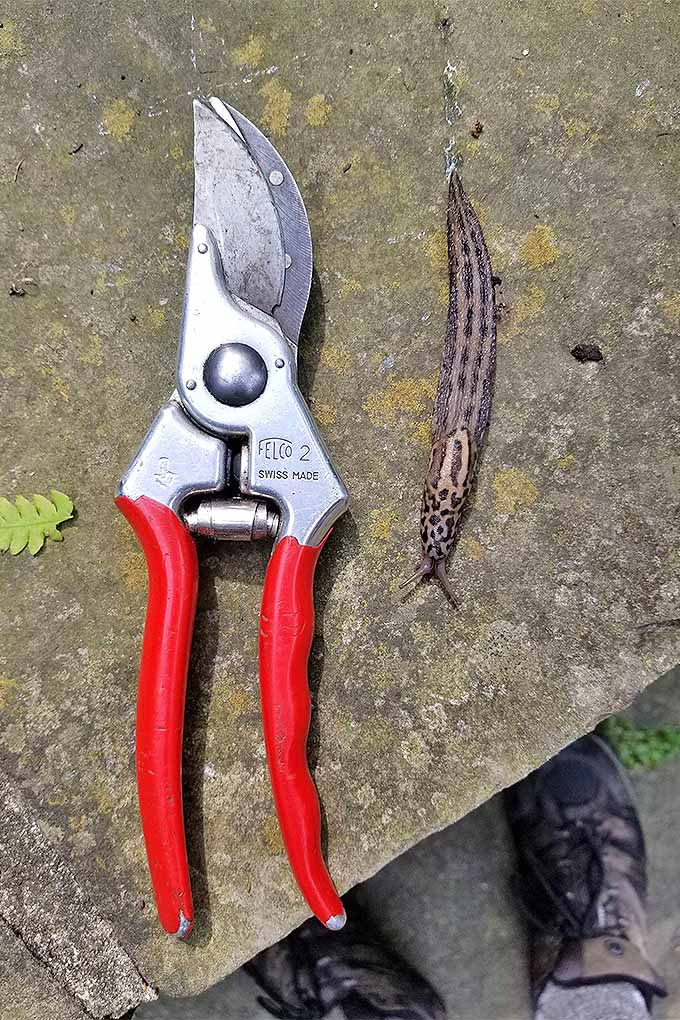
I have spent untold hours in the yards of a few clients, carefully weeding out the rooted remnants of mock strawberry and goutweed. It is a slow, frustrating process, but it works.
These plants need green growth to synthesize food, so if you eliminate their ability to produce the food necessary to feed the roots, you will slowly but inevitably kill these troublemakers.
When it comes to bugs and other critters, mechanical solutions include traps and the like, but also old-fashioned squishing.
When it comes to bugs and other critters, mechanical solutions include traps and the like, but also old-fashioned squishing. When I found hornworms on my beloved jalapeños last spring, I visited my plants several times a night to search for those voracious jerks. When I found them, I threw them onto the busy street in front of my home.
Ever run into trouble with slugs and snails? I’ve been lucky enough to avoid them for much of my time gardening, but when I do encounter them I am a fan of the “pluck and chuck” method: pick the pests off one by one and throw them where they can’t cause any more trouble.
That’s a pretty good, if barbaric, example of Mechanical Control. But there are far more elegant solutions to dealing with slugs and snails!
Getting out there and doing some dirty work is the second-best way to control garden problems.
Biological Control
The third step of the pyramid is to introduce a biological control agent.
A biological control involves the use of natural enemies to control pests.This could include anything from parasitic wasps to control the aforementioned hornworm problem, to installing bat houses near your home, to growing plants like marigolds to attract desirable insects into your garden to take care of the bad boys.
Image “spider.jpg” – In Folder “Pictures – Pesticides” “Spiders don’t want to bother you, and help in the garden to eat up undesirable and nasty bugs.”
Biological control agents can be useful in the right situation. A growing number of garden centers will sell ladybugs by the hundreds to customers.
Be sure to look for ones that have been raised in captivity rather than ladybugs collected from the wild and shipped elsewhere.
Despite their cute appearance and gentle names, ladybugs are voracious hunters of undesirable garden pests. Another backyard buddy, the praying mantis, devours almost any insect that enters its domain.
Image – “mantis.jpg” – In folder “Pictures – Pesticide” “The praying mantis is always a welcome addition in any garden to keep undesirable pests away.”
The funny thing about biological agents is that they have a way of correcting themselves over time. If you introduce ladybugs to control aphids, and the aphids are all devoured, you’ll have no more food supply for the ladybugs and they’ll go on their way to where the pests are.
Chemical Control
Here it is, what we’ve all been waiting for!
This includes the use of any sprays, powders, granules, and any other chemical applied to kill, attract, interrupt, or repel pests. Chemical solutions to your problem are the last option in your list of possibilities.
Without special licensure, your available options are limited to what is publicly available at garden centers and other retailers.
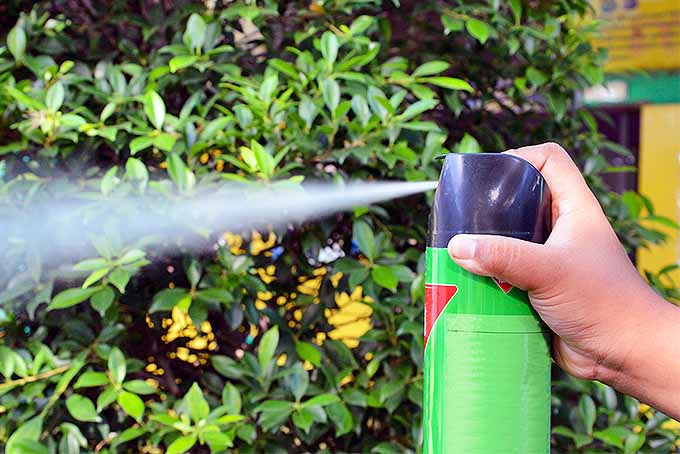
The most important element of using any chemical is to read the label.
After the thorough vetting and review any chemical agent goes through to be approved for public use, the label on any type of pesticide is a legal document. Just like medicines, recipes, and assembly directions, you should always carefully read the label of any product before you purchase it, and again before you use it.
Safety Measures
When applying anything in the garden, organic or heavily industrialized, always keep safety in the forefront of your actions.
I’m stubborn as a pack of mules and accept risks in most gardening activities, but pesticide application guarantees that I’ll be wearing full safety gear every single time. Let’s be blunt here: cutting corners with safety is stupid, so don’t do it.

Every product you use requires different safety protocols and equipment. You’ll figure that out when you read the label (See? It really is important to read it!) but there are a few basic practices and pieces of gear that are required for almost all applications:
Best Practices
The most important safety measure you can practice is to be cognizant and aware of your actions. Pay extra careful attention to everything around you. Tree branches might be nothing more than a nuisance ordinarily, but they could be dangerous if you don’t see them because you’re wearing goggles.
“Drift” is the term used to describe what happens when your application hits unintended areas because of carelessness, environmental factors (such as wind, water, etc.), and mechanical obstructions. Spraying a non-selective herbicide with a lack of attention is a recipe for disaster when the wind blows the spray onto unintended targets.
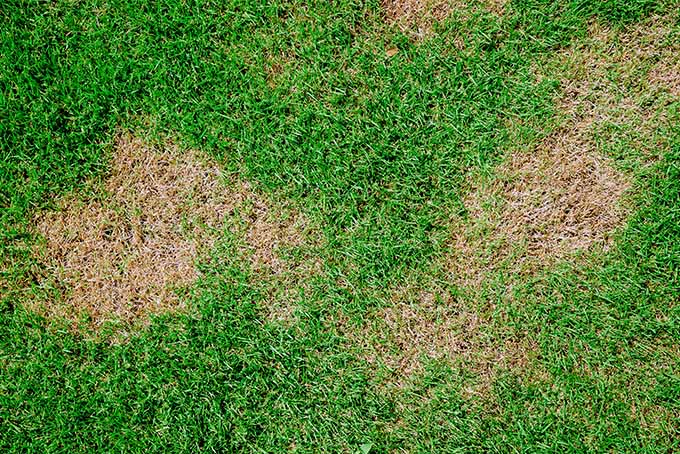
Make sure you do not paint yourself into a corner. Imagine spraying that same non-selective herbicide on a patch of weeds, walking through it, and then tracking plant killer through your lawn. It sounds ridiculous, but I’ve seen it and may have even done it myself. Just don’t tell my boss.
Be mindful when mixing chemicals. This is when most spills and accidental contacts occur. Follow the directions on the label and avoid using water directly from a hose. Instead, fill up a watering can that you can then dump into a spray tank. This is an important safety measure to prevent siphoning pesticides back into the water supply.
Safety Equipment
In the words of the perennially wise Hank Hill, “Now remember everybody, goggles might make you look cool, but they are also a part of proper safety attire.”
At a minimum, you should wear safety glasses, latex gloves, long sleeves, and long pants. Your goal is to avoid contact with any pesticide on any portion of your skin.
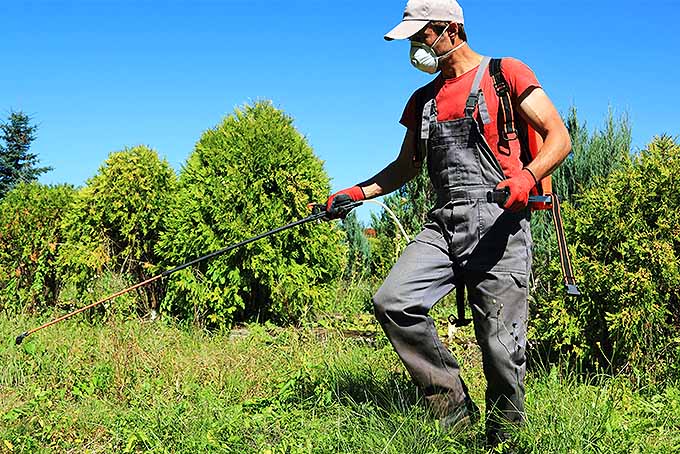
It’s always handy to have a first aid kit nearby for almost any situation. Accidents happen, right?
Most of the time you’re okay to use lots of water to rinse a chemical off of your skin or out of your eyes, but the only way to know for sure if that’s safe for individual products is to… yep, you guessed it: READ THE LABEL!
Basic Breakdown of Pesticide Formulation
In general, most homeowners are going to interact with either liquid or solid formulations. If you’ve got trouble with ants and other nasties, a gel can also be used in addition to these products.
Liquid Formulations
The essence of most pesticide applications is found in spraying a liquid chemical to achieve the desired effect.
Some combinations are available in a pre-mixed container, in which case you read the label and apply as instructed. Other times you may find concentrates of particular products; you add a small amount of concentrate to a portion of water and mix vigorously before application.
Generally, concentrates are more effective in the long run if you plan on repeat applications, but they tend to cost more outright. Single use, pre-mixed bottles are handy to use if you’ve got a small mealybug problem or want to apply some liquid fertilizer to your roses in the springtime.
Liquid concoctions usually take effect immediately but require regular reapplications. And as stated above, these liquids can be hazardous if they come into contact with you in any way. These are easy to spill on the hands or arms, but that’s why you wear long sleeves and gloves, right? Right.
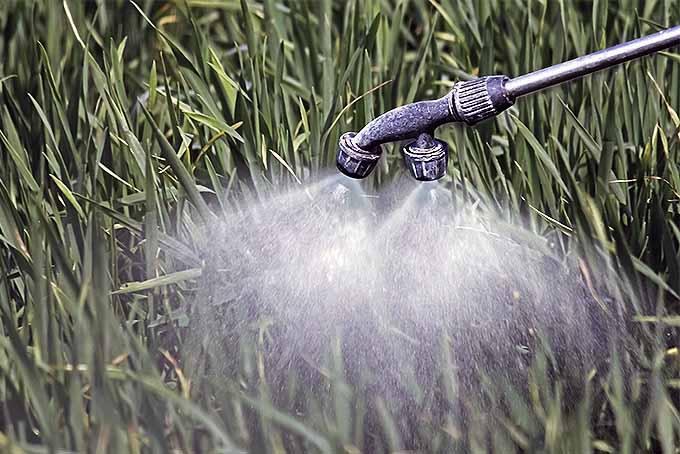
A good example of a liquid-based pesticide is Bacillus thuringiensis kurstaki, commonly referred to as Btk. It is a sprayed bacteria that can be applied directly to the leaves of plants being hounded by undesirable caterpillars. The bacteria, when ingested by caterpillars, will literally tear apart their stomachs and kill them with minimal mess.
There’s another formulation called Bacillus thuringiensis israelensis, or Bti. It can be used to kill mosquitoes by applying some of the bacteria to bodies of water where mosquitoes breed and congregate. Very effective stuff!
But both Btk and Bti will kill any caterpillar they come into contact with, including highly desirable monarch caterpillars. Watch where you spray!
Kaolin clay is a handy application for fruit trees that can be used to prevent insects and birds from damaging a crop.
Literally a covering of finely-ground and processed clay and ceramic, Kaolin clay can be applied as a spray to cover the leaves and fruit of orchard trees with a thin layer of dust. Insects find the rough texture offensive and sometimes even damaging, and simply leave the tree alone. This means birds will ignore treated trees in turn, because they will have no insects to feed on.
Kaolin clay is an expensive solution, which is why it’s generally used on trees grown to produce a crop intended for sale or commercial use.
Kaolin clay is an expensive solution, which is why it’s generally used on trees grown to produce a crop intended for sale or commercial use.
No discussion of pesticides is complete without the mention of neem oil. An old stand-by favorite, neem oil is produced from need seeds. The naturally-occuring chemical prevents insects from molting when they encounter the stuff. Generally considered safe to use on most plants, neem is a favorite. It can be picked up as a concentrate or in a pre-mixed formula.
Vinegar-based sprays are another organic/all-natural solution to eliminating weeds and undesirable plants in the garden. Any of these sprays, homemade or purchased, will work to kill surface leaves of most plants but do not kill the roots. Frequent application is necessary when using a vinegar-based spray.
Solid Formulations
Granules, powders, and the like are also commonly used. They are useful as pre-emergents to control the growth of weeds and can be thrown down as a long-term solution to eliminate insects and rodents.
Solids are beneficial because they provide longer lasting impact. Most granules will slowly break down over time and through exposure to water, providing a steady, measured release.
By reading the directions on the label, you’ll learn the expected duration of these products and will be provided with a measured calendar of application.
In general, these formulations are most dangerous to your eyes, mouth, and nose. The solution is to wear safety goggles, gloves, and some sort of breathing mask. Before applying any pesticide, read the label and become familiar with the necessary actions to take if you’ve been exposed.
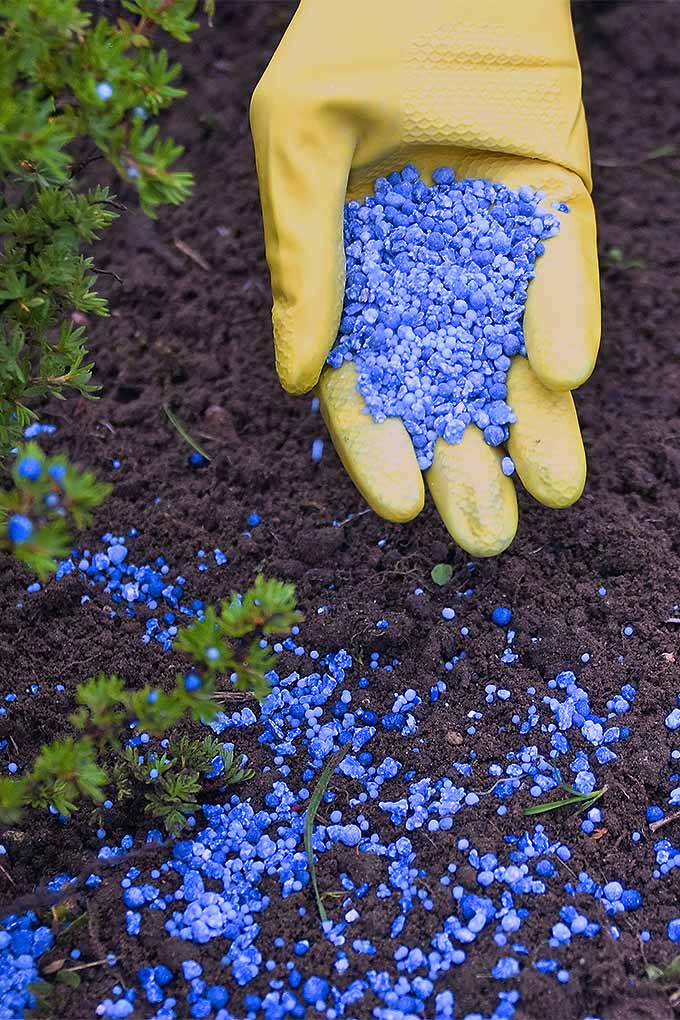
An excellent purchase for the gardener (hell, for anybody!) is diatomaceous earth. It is an all-around bug killer and can work on bed bugs, cockroaches, ordinary garden pests, and fleas, among other targeted pests. It is a type of granular pesticide composed of pulverized single-celled, fossilized organisms.
It is a legitimately all-natural product with no chemical additives. If there’s one warning about using diatomaceous earth it is to keep in mind that it is non-selective. That means it can potentially kill any insect it comes across, good and bad.
A Few Final Words
There’s been a lot to look at here, huh? That’s alright! When I took my pesticide applicator course it was made clear to every student that we weren’t supposed to remember everything we learned.
What’s important is to maintain a firm grasp on the fundamental steps of Integrated Pest Management, and to do some research to figure out what problems we’re encountering.

Preventing problems from arising in the first place is the real secret to pest control. And when it comes to actually applying chemicals, it’s vital to always read the label and to practice diligent safety practices.
A good garden is one tended by an attentive gardener. Keep a spring checklist and prune plants at the right time to minimize disease, infections, and undesirable pests.
With these fundamental practices, you can now integrate your better knowledge on pesticide application into your retinue. Do you have experience in this area? Share your stories and questions with us in the comments.
Photos by Matt Suwak, © Ask the Experts, LLC. ALL RIGHTS RESERVED. See our TOS for more details. Product photo via Bug Sales. Uncredited photos: Shutterstock.
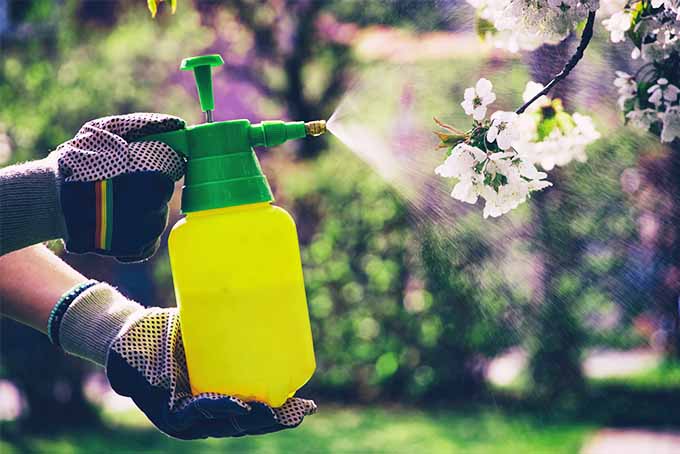
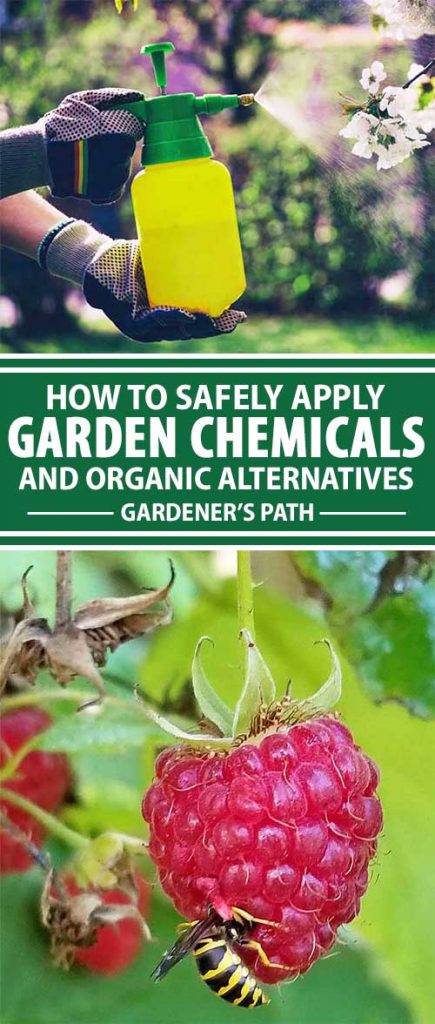
Consider adding a wick applicator product to your article for herbicide treatment (i.e. Buckthorn Blaster). This method avoids non-target damage caused by spraying.
Great recommendation, we use wick applicators when we treat Aralia trees and larger invasive vines. Thank you for the suggestion!
Can you apply both a liquid and a granular insecticide at the same time? e.g. Ecologic has a 30-day yard spray and a 10 lb bag of granules, and says both are pet safe when used as directed. But the directions don’t say not to use both the liquid and the granules at the same time. We have a flea problem in the back yard
and wanted to know if it would be unsafe for our dog to apply the 30-day liquid spray with the garden hose, let it dry, then use a spreader to apply the 6-month granules.
Hi Kathi, I’m sorry you have fleas in your yard! That is an excellent question. However, I am hesitant to answer it. The products look pretty safe, since they have essential oils in them. That said, I don’t know how safe it would be to double up on them. Plant compounds can be pretty potent. I think that you should contact Ecologic to get their advice. They have a number for questions that is on EST. It is 1-800-923-3622. They also have a form you can use to submit your question. Here is the link. I’m sure you want to… Read more »